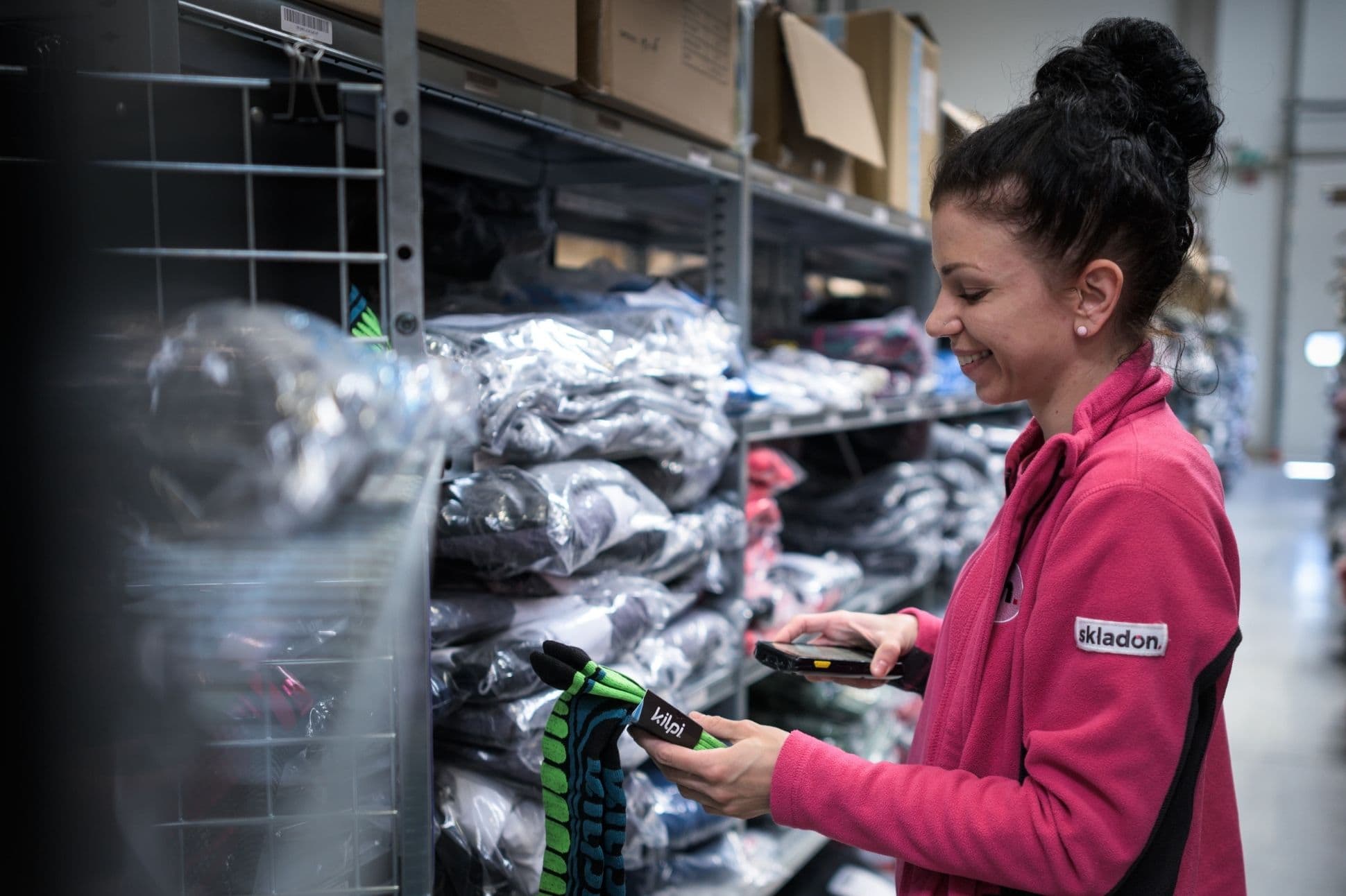How to store goods for quick order picking


In today’s e-commerce era, online shoppers are increasingly demanding speed of delivery. The importance of speed is confirmed by the fact that 75% of customers perceive it as a key factor in purchaseing from your e-shop. How to achieve the shortest possible order processing time? Adapt your processes accordingly and store the required products as close to the packing area as possible!
When writing this article we assume that your warehouse is not equipped with conveyors and that is placed effectively between the packing and shipping area. Because only by designing the layout in this way will you achieve optimal flow of goods. Furthermore, we will assume that there are picking and long-term inventory zones in your premises. For example, a two-meter high shelving unit is used for picking, from which you are able to pick the product immediately. For long-term stock, a significantly higher pallet rack is used. This stock is placed in boxes and on pallets so it cannot be picked immediately. Given the process and financial requirements, we see this as the most optimal combination.
The larger your warehouse the longer the picking process is. If you want to reduce the impact of this direct formula, you can’t avoid investing in a quality warehouse management system (WMS), which is the very basis for warehouse managing. An ideal WMS works algorithmically with information and other input parameters from the past, thereby streamlining the logistics process in your warehouse. Furthermore, so-called optimal routes need to be set up for the optimal flow of products through the individual processes. The optimal route means the shortest route to the desired product.
Receipt of goods
It all starts with the receipt of goods into the warehouse. If you implement the complex storage process right from the start, you will have to manage fewer additional “optimization steps”. During the receipt of goods, the WMS identifies the turnover of each SKU in a given season. For fast movers, there is a greater expectation of faster sales. Low-turnover products (slow movers) are the opposite.
Simplified example: you are preparing for the summer season and at the end of spring you receive two different returns from your customers. One return includes summer sunglasses, the other includes ski boots. So due to the season there is a greater expectation of sunglass sales (fast mover). Therefore, you store these sunglasses in a more efficient location than ski boots (slow mover) for a future picking. The more efficient location is meant to be a position in the warehouse that is closer to the packing tables. On the other hand you won’t need the ski boots for at least six months so you can store them in the long-term inventory area or in a more remote position.
A reliable WMS system guides you via optimal route where to store the received SKUs. If a particular SKU is stored in more than one location, the system will either guide you to the nearest possible location, i.e. there is enough space, or it will sort the other position options according to distance. Taking into account expiry dates or LOT of the products.
Picking of goods
This is the process of taking products from the warehouse based on orders received. The warehouse software, ideally taking into account the expiration date or batch, guides you to pick SKUs so that you take as few steps as possible. Again, it works with the optimal route or the so-called picking snake. It deliberately guides you to the products that are closest to the packing area and then to the next products that are again closest to that position. In this way you can activate the packers faster and reduce their downtime.
Picking efficiency is increased by controlled order release, which takes place automatically according to a complex algorithm. The system takes into account various factors and their combinations so that orders are prepared for processing in the correct order and with maximum efficiency. This optimizes the work of warehouse staff and minimizes waiting for products that need to be transferred first.
Replenishment of goods
When are received orders, which products are not available on the picking positions, the system immediately creates a queue of work for replenishment. In practice, this is a list and quantity of individual products that need to be moved to these positions according to the orders. The system guides the worker to the long-term inventory by the shortest route to the required products. After taking these products from the long-term inventory it guides the operation staff again along this route to the optimal picking positions. In this way the products are ready for picking and the orders can be released.
Ideally, your WMS also generates replenishment commands for products that have a system-set minimum and maximum quantity level. When the minimum is reached in the picking zone, the WMS prompts the operation staff to move the number of SKUs needed to reach the maximum.
Ideally, replenishment takes place before the actual picking. For example, during the afternoon shift after the carriers’ pickup windows and receipt of orders for shipment for the next day.
Another reason for products replenishment in the warehouse is so-called consolidation. This is the repositioning of the same SKU from multiple positions to one most suitable position. In this way you are able to achieve a higher capacity of your warehouse space.
ABC analysis
ABC analysis is an ideal tool for products position optimizing in the warehouse, for example if the selected classification variable is the turnover rate of the goods. This analysis consists in dividing products according to defined limits into a selected number of categories, usually A to D. The first three (A, B and C) determine the placement of SKUs in the picking zone, category D includes obsolete products, usually placed into long-term inventory area. Products that are classified in category A after ABC analysis are expected to have a higher market demand and thus be more frequently present in orders. Category C products are the opposite. The closer you have A products to the packing area, the fewer steps the picker will need to generate.
ABC analysis has one disadvantage – it is not eternal. It needs to be constantly updated based on a number of variables. For example, according to seasonality, current marketing campaigns, etc. When compiling it, it is also important to work with sales forecasts for the next period, which is also related to inventory planning.
In-house logistics or outsourcing?
If you manage your logistics inefficiently it will generate additional time or financial costs. Because as we all know, time is money! And you can be wasteful with this money in two ways in the storage and picking process. One is the excessive costs for operational staff that arise from inappropriate storage and therefore the subsequent lengthy order picking process. The second is a gradual loss of loyalty or a complete churn of your customers to your competitors due to long delivery times.
If your business is growing significantly, you have two options. Either get a really reliable WMS that allows the above mentioned settings. In this case it is a very high upfront investment to which you also need to add the time required for maintenance and further development of the individual components. Or you can get in touch with an external logistics partner who already has everything tuned up and whose system is ready to handle your orders immediately at the level described.
